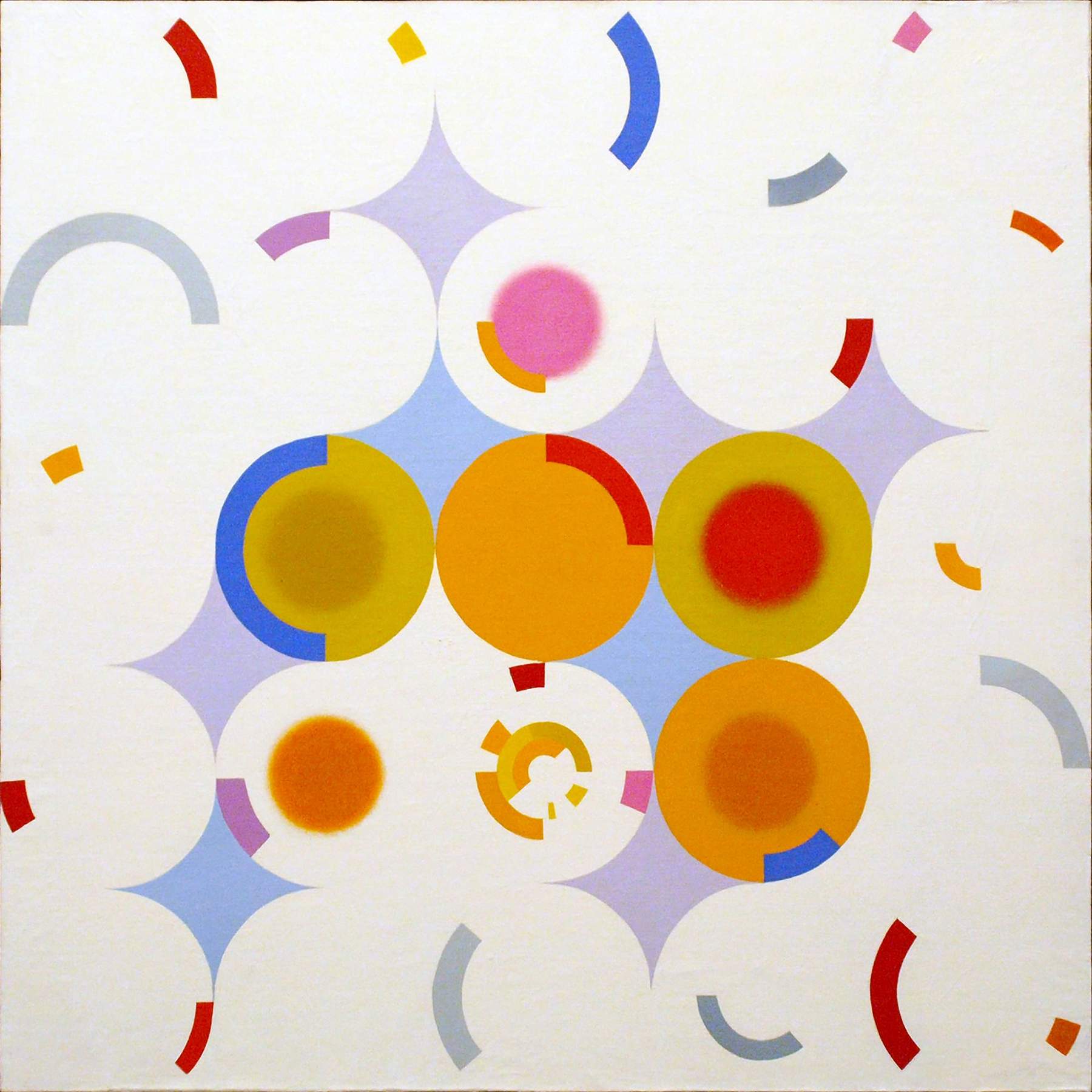Running from August 7 to September 12, 2021, at Forte Lorenese in Forte dei Marmi, is the exhibition Carlo Nangeroni. Abstraction: music to be seen, a retrospective on Carlo N angeroni (Charles John Nangeroni; New York, 1922 - Milan, 2018) curated by Valerio Dehò and produced in collaboration with theCarlo Nangeroni Archive in Milan. Sponsored by the City of Forte dei Marmi, the exhibition presents more than eighty works by Carlo Nangeroni, an American painter and set designer of Italian origin, dated between 1949 and 1999. An important nucleus of paintings mostly acrylics, but also oils on canvas and watercolors, is joined by three sculptures, made especially for the exhibition under license from the artist’s archive and project, placed in Piazza Garibaldi.
The exhibition itinerary starts from a self-portrait from 1949, still declined in the figurative language, to the abstraction of the late 1990s, documenting the decisive stylistic and poetic transition in the author’s work. A pupil of Mauro Reggiani, one of the fathers of abstraction in Italy, Nangeroni developed his own style of painting in which the language of music, with its rhythms, pauses and repetitions, was the model of reference. The form of the circle became essential in him at the time when in the late 1950s he began to abandon figuration and later Informal and color, for a form of abstraction built on cadences and reiteration.
In Mutations, Interferences, as well as Elements in Motion, examples of which can be admired in the exhibition, what one sees represented is his painting in a minimalist vision but open to color, variation, and creation as a development of themes similar to musical themes. The circular element was employed as a module repeated in ever-changing forms and sequences, like notes on a visual pentagram. “Carlo Nangeroni’s work,” explains curator Valerio Dehò, “has developed with an extraordinary coherence and ability to articulate in the rhythm, in the composition of the work and in the visual structure its own language in which the essence of music becomes something that knows how to excite through the gaze.” Although consonances with the world of artistic research between the early 1960s and the late 1970s can be traced in Nangeroni’s work, his painting is from a personal perspective: “I have nothing to found, to build, to make my paintings, I let myself be guided by instinct,” the artist wrote about his own work.
The reasons for his particular approach in the variegated art system of those years consist in his ability to participate in the art world without any form of “ideological” or group involvement. Likewise, from a formal point of view, he seems to want to avoid schematic forms in the process of forming his works. The space of his canvases or extraordinary watercolor papers is rigorous, like a pentagram in which visual molecules can agitate. With other artists active in the 1960s and 1970s especially in the Lombardy area, he also shares certain formal choices, but he never renounces creation as a process of discovery and invention free from ideological conditioning. Until the 1990s he limits the use of color to give value and strength to visual structures and musical rhythms.
Accompanying the exhibition is a volume published by NFC Edizioni, with critical text by Valerio Dehò.
Carlo Nangeroni was born in New York in 1922 to a family of Lombard emigrants. He returned to Milan during his teenage years, where he attended the Brera School of Art where he was a student of Mauro Reggiani. Resettling in New York in 1946, he attended the studio of sculptor Alexander Archipenko, and came into contact with the protagonists of Action painting such as Willem de Kooning and Franz Kline. His first solo exhibition was in ’49 at the New York Circulating Gallery of Paintings. During those years he painted with an abstract expressionist orientation and was involved in set design and staging for theatrical works. In the 1950s he began exhibiting in group shows and working on a series of almost monochrome and slight relief works. In 1958 he collaborated on an advertising project entitled The Chrisalis by Salvador Dali for a pharmaceutical company that produced the first tranquilizers. The same year he returned to Milan in order to devote himself exclusively to painting, and where he met artists such as Piero Manzoni, Lucio Fontana, and Emilio Scanavino. He began to exhibit in solo shows. In ’65, ’73 and ’86 he was invited to the Rome Quadriennale, and in ’72 he participated in the Venice Biennale for graphics. Since the 1980s he has been experimenting with iridescent chromatism by means of juxtapositions of colored lines. Until 2004 he is a lecturer at the Scuola Politecnica di Design in Milan. His works can be found in collections in the United States (including in New York University’s contemporary art collection), France, Germany, Switzerland and Italy, including the Galleria d’Arte Moderna in Turin.
For all information, you can visitforte.com.
 |
| Music to see. An exhibition in Forte dei Marmi traces the career of Carlo Nangeroni |
Warning: the translation into English of the original Italian article was created using automatic tools. We undertake to review all articles, but we do not guarantee the total absence of inaccuracies in the translation due to the program. You can find the original by clicking on the ITA button. If you find any mistake,please contact us.